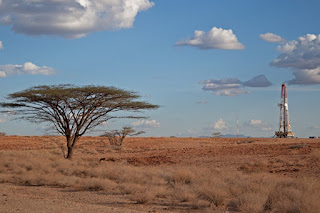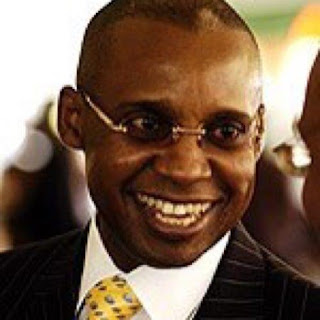June 2017: The month of game changers in Kenya
 |
| The High Speed locomotive to be running on SGR |
THE MONTH OF June 2017 is significant in Kenya’s history. Three
game changing projects, two in infrastructure and one in oil- will come live.
These are the commissioning of the Standard Gauge Railway and also the largest
wind Power project in Africa. By Mid-
June, our first barrel of oil will sail to the market-either in China or India.
The three are game changers because they could turn out to
be jolt economic growth needs to cross-the 8.00% mark. They will add a strand
on Kenya’s financial muscle by either saving consumers some money or earning an
extra dime. The two infrastructure
projects will result in lower cost of doing business in the country leading to
low consumer goods prices in the near future.
Lake Turkana Wind
Power which will generate 310 MW into the national grid is raring to go eleven
years after it was conceived. As at the end of February, she had erected 347
out of 365 turbines in readiness for start of business in June this year. This
is to say that come June 2017, Kenya’s electricity generating capacity will go
up 18 per cent to more than 2022 MW.
Lake Turkana wind power is the largest wind power project in
Africa. The US$763 million project is the largest private sector investment in
the country’s history. It has signed a 20-year Power Purchase
agreement (PPA) at a fixed price of $0.07 per KWh with Kenya Power and Lighting
Company (KPLC). KPLC is the sole distributor of electric power in
Kenya. Kenyans can therefore brace themselves for cheap power in future.
 |
| A Crude drilling site in Lokichar |
Wind power, coupled with geothermal and
hydro-electric power that already accounts for more than 70 per cent of
Kenya’s electricity supply, will make Kenya nearly 100 per cent dependent
on environmentally-friendly green energy
sources and eliminate power fluctuations.
Currently, Kenya uses the expensive
Thermal power to smooth out fluctuations. Thermal power will gradually be
retired from the national grid thus eliminating diesel prices fluctuations from
our bills.
Also raring to go is the high speed Standard Gauge Railway
in June. It is expected to also load some more savings for the Manufacturing
sector in particular. The 600 Km Mombasa -Nairobi section of the Northern
Corridor cost $4.1 billion to build and equip, including Locomotives, passenger
coaches and wagons.
The project will be
commissioned 18 months ahead of schedule despite challenges which involved,
protests by land owners, litigations and the usual political noise. The project
is also facing viability issues as other partners,-Uganda and Rwanda- keep
changing their positon on the partnership.
That it will begin
operations 18 months ahead of schedule, means that Kenyans will enjoy a bonus
in terms of contribution to our national wealth creation of 18 months. It could
also a good learning ground to help the undecided partners to make up their
minds.
The high speed
railway line will cut travel time and freight costs significantly. Passenger
travel time between Nairobi and Mombasa will be cut to a maximum of five hours
from the current 10- hours by rail and from Seven hours by road. Freight travel
will also be significantly cut to just 12 hours from loading to delivery down
from more 24 hours currently. It will save Kenya an estimated US$2 billion a
year, in freight costs.
The train will ship 40 per cent of cargo off-loaded at the
Mombasa Port. This will reduce congestion at the Port, congestion of the
Mombasa-Nairobi Highway and thus improve travel time by road on the same
highway. The passenger train will carry
up to 960 passengers per trip. That is 20 -fifty passenger buses also off the
road.
Some reports indicate that the cost of transporting a ton of
freight per kilometer will decline by 40 per cent to $0.08 per from the current
$0.20. However, according to Kenya
Railways Corporation, the optimal tariff including passenger fares will be determined
in the six month period between- June and December. Even then, reports
indicate, manufacturers have factored in the Railway as part of their logistics
next year. Low Freight charges by rail
are expected to force down the cost per ton by road.
Also during June,
Kenya will export her first ever barrel of crude oil to the international
market in what is called Experimental Oil Production, during which she plans to
be exporting 2,000 barrels of crude a day. All contracts for the exercise are
already in place and raring to go.
Kenya’s oil from Lockichar basin in Samburu County, is said
to be among the top grade crudes in the world that earn a premium price in the
world market. That will add a strand on Kenya’s financial sinews.
That crude exports-even though on an experimental basis-
will add a strand on Kenya’s sinews is supported by other actions that are not
reported in this piece. Simply put, the partners in the project, are gearing to
launch all studies and designs including the Front End Engineering designs FEED
in July.
Also the Invest decisions will also be made during the
second half- of this year. Construction
of the 861n KM pipeline from Lokichar to Lamu Port will commence soon after the
FEED and be completed by 2021 when Kenya expects to go full throttle exporting 100,000bpd.



Comments
Post a Comment